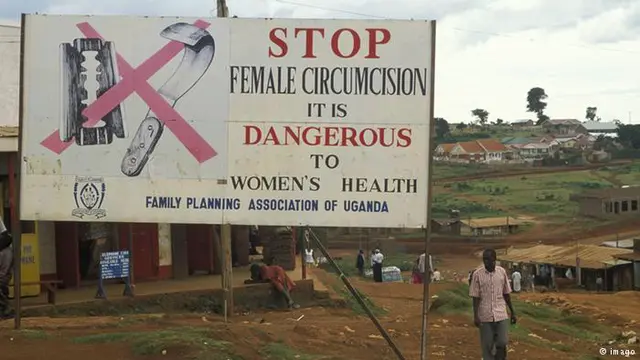For the Sabiny community in eastern Uganda, Female Genital Mutilation (FGM) is a deeply-rooted cultural custom.
FGM, a traditional practice in some African communities, involves the partial or total removal of the external genitalia on girls usually aged eight years and above.
In Sebei region, which could be referred to as the land of the Sabiny, a battle over FGM is going ahead between those supporting modern medical science and those sticking to indigenous beliefs.
The Sabiny, who were pastoralists, believe FGM could reduce the sexual desire of their wives, who used to stay at home for months while their husbands were out grazing animals.
Local elders say special women are handpicked by spiritual ancestors to carry out the practice.
The mutilators are usually women in their late 50's and above. Kokop Chebet is one of them.
Chebet says when she was 22, she was asked by her ancestors through a dream to start taking up the role under the supervision of an elderly lady, usually referred to as a "mentor" among the Sabiny. Since then, she has been carrying out the practice for the last six decades.
Young girls of the community say they are "overcome by a spell" which urges them to undergo FGM, an initiation ceremony into womanhood. After a girl is mutilated, she would be ready for marriage, however young she is.
Behind the cutting ceremonies, many rituals, which are rarely spoken about, are held, for instance a sheep is strangled before day break as a sacrifice.
The elders says FGM is part of their culture over the centuries and must remain so without interruption from people outside their community, while Chebet says suppression of the custom would provoke harsh punishment from their ancestors.
However despite the locals' defence, the Ugandan government insists FGM, as a cultural practice, must be abolished due to its harmful effects on young girls.
The World Health Organization (WHO) says FGM has no health benefits for girls and women, and could cause severe bleeding, problems in urinating, and later cysts, infections, as well as complications in childbirth.
Supported by UN agencies, the government in 2010 outlawed the practice by enacting an anti-FGM law under which culprits could be jailed for four to five years once found guilty.
Once in a while, the police carries out operations in villages where FGM is concentrated to roundup those who organize the practice.
In the meantime, the UN Population Fund has partnered with the Catholic church in Sebei, which has an influence over the community, to fight against FGM.
Stanley Ntagali, head of the Uganda's Anglican Church, say their efforts would yield results. "In every service, priests can talk about the 'evils' of FGM," he says.
"Culture is dynamic and those that have a negative character must be dropped," Ntagali says.
Civil society groups believe that apart from the enforcement of law, the efforts by churches is another way to bring about behavioral changes in the community.
Some analysts say the "carrot and stick" measures are critical in the fight against the centuries' old practice.
Facing the joint drive, FMG has gone underground in the country -- girls are taken to hills or forests, places hard to reach, to be mutilated. And some mutilators have crossed into neighboring western Kenya where they continue carrying out the practice.
But the government, civil society groups and UN agencies are not taking that lightly. In response, they have been extending their battle lines. Enditem
 简体中文
简体中文

